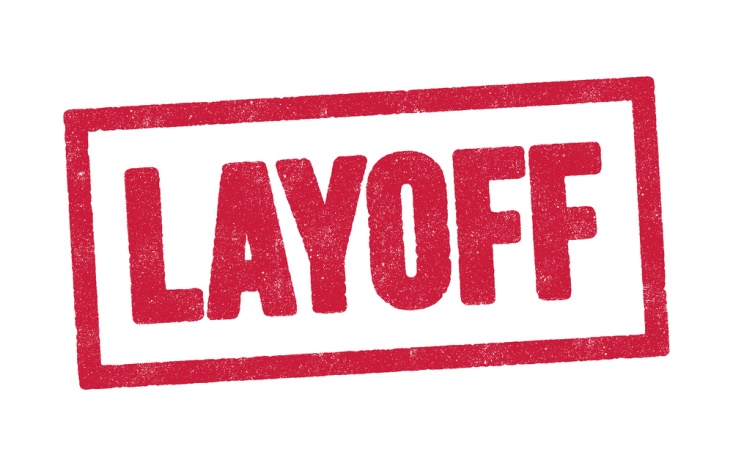
Lately, if you listen to the business news or read any business publication, it seems as if another company is announcing another round of layoffs. Leading through a layoff is one of the most challenging situations a business leader must face. When doing so, it is imperative leaders remember they are directly impacting a person’s ability to financially support themselves, and most probably a family as well; layoffs are not just about numbers on a piece of paper, but people’s lives.
To be done professionally, laying off team members requires a balance of empathy, transparency, and strategic foresight to navigate the emotional and operational complexities involved. The goal is to manage the process in a way that respects those being laid off, minimizes damage to the morale of those who remain, while positioning the organization for future success.
Following are 10 specific behaviors all leaders should demonstrate when dealing with layoffs within their organization – and how to operationalize them.
1. Empathy
First and foremost, as mentioned in the introduction to this blog, you are dealing with people’s financial livelihood; therefore, it is imperative you demonstrate genuine understanding and compassion for the emotional turmoil all your employees are experiencing. This is best done by personalizing communication as much as possible. For those being laid off, schedule one-on-one meetings to deliver the news empathetically. Yes, this may be time-consuming, however, laid off employees deserve the time required by leadership to show their empathy for them – as people – in a way that mass email layoffs cannot (don’t even get me started on that epic leadership failure).
Offer support in the form of counseling services and/or job placement assistance for those being laid off. For the employees not being laid off, acknowledge their feelings of loss and uncertainty, and provide avenues for them to express their emotions, such as feedback sessions or informal meet-ups. In other words, genuinely support everyone, in both word and deed.
2. Transparency
Communicate openly about the situation leading to the layoffs, the process, and the expected outcomes. This can best be operationalized by conducting a series of town hall meetings where you share the reasons behind the layoffs, such as financial pressures, restructuring for efficiency, or taking the company in a different strategic direction. Provide detailed timelines and explain the selection criteria for layoffs to dispel rumors and reduce uncertainty. Because believe me, everyone is talking about the upcoming layoffs and it is not only impacting their emotional well-being, but it’s also a huge distraction to their productivity.
3. Support
As mentioned earlier, provide resources to help affected employees’ transition. This can be done by creating a comprehensive support package that includes severance pay, extended health benefits, and career coaching. Organize job fairs and networking events to connect outgoing staff with potential employers. Provide training workshops on resume writing and interview skills.
4. Vision
Articulate a clear path forward for the organization post-layoff. Develop and share a strategic plan that outlines how the organization will navigate the post-layoff period, including steps to regain stability and future growth initiatives. Highlight opportunities arising from the restructuring and how the remaining team will play a critical role in achieving new goals.
NOTE to Leadership and HR: If the employees not being laid off are expected to take on the work of their laid off colleagues – financially reward them as you cannot expect one employee to now do the job of two employees, without any additional reward(s).
5. Inclusivity
Involve employees in the decision-making process where appropriate. Before finalizing layoff decisions, seek input from various levels within the organization to understand the potential impacts and gather suggestions for alternative cost-saving measures. This can include anonymous surveys or brainstorming sessions focused on efficiency improvements.
6. Recognition
Acknowledge the contributions of those being laid off and celebrate their achievements. IF possible, write personalized thank-you letters acknowledging the individual contributions of departing employees and speak positively about them to the remaining team members.
7. Consistency
Ensure that all actions during the layoff process are consistent with the organization’s values and ethical standards. Develop a layoff policy that reflects fairness, dignity, and respect for all employees (do not play favorites with any one employee or anyone vertical of the organization). This policy should guide every step of the process, from how decisions are made to how they are communicated and implemented. Conduct training for leaders on how to carry out layoffs in a manner that aligns with these principles.
8. Adaptability
Be prepared to adjust strategies based on feedback and the evolving situation. After the initial layoff announcements, hold follow-up meetings with remaining team members to discuss any concerns and suggestions. Be open to adjusting the post-layoff plan based on this feedback, such as enhancing support for the remaining employees or revisiting workload distributions.
9. Courage
Face difficult decisions head-on and take responsibility for the outcomes. Personally lead the communication efforts around the layoffs, rather than delegating it to HR. Acknowledge the pain and disruption caused by the layoffs and take responsibility for the decision, explaining why it was necessary for the organization’s long-term health.
10. Long-term Focus
Keep the organization’s future in mind, and make sure you stay strategically aligned with the vision of the company when making tough short-term decisions. Implement a mentorship program or talent development initiatives for remaining employees to prepare them for future roles and challenges. This demonstrates a commitment to their growth and to building a stronger, more resilient organization.
By embodying these behaviors, leaders can navigate the turbulent waters of layoffs with empathy, integrity, and compassion. The key is to manage the process in a way that respects those affected, minimizes damage to the overall morale of the company, and sets the stage for future recovery and growth.
Effective leadership during a layoff is about more than just reducing headcount; it’s about guiding your organization and its people through a difficult transition with empathy, clarity, and a vision for the future.
Dr. Patty Ann
